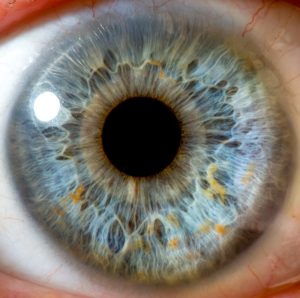To help transform a person to change, attending, listening and responding are key, but the skilled counselor needs to be able to help instigate change or water the seeds of the healing process within a client. Whether loss and grief, or merely more daily stressors or emotional issues that are holding the client back from living life productively, the counselor needs to know how to coach the client and help the client find that preferred outcome. This involves not only identifying the goals and actively pushing towards them but also motivating and challenging them. Like a coach who is able to abstract the best out of their players on the field, a counselor needs to be able to encourage and challenge his/her clients to produce meaningful change. Some clients respond better, others may be still facing inner turmoil and self esteem issues. Some clients may be more resilient naturally, while others may need more prodding and gentle and empathetic guidance. Each client is unique and different but the general ideas within this short blog complement the previous blogs on attending the client and responding to the client.

Some clients may have zero motivation to be challenged. They may possess some world view or bias that prevents this change. Some may be forced to attend counseling and feel no need to change. This can occur with state mandated counseling or clients forced to attend because of family or spouses. Some clients may feel motivated simply because of guilt and look to foster a positive change. Some may simply have an interest in the counseling process and wish to see what happens. In the best case, one will find a client who understands the critical importance of counseling and the changes that need made. Regardless of the clients motivation level, it is the purpose of the counselor to help bring the best out of the client. This can be easier said then done.
The Counselor as Coach?
Life coaching in itself is a newer field within the Human Service Field. It is not clinical or requiring of various licensing but it does promote the idea of healthy change and life styles. It involves a professional who is trained to motivate, direct and help clients meet end goals. This involves both encouraging and challenging the client. Whether it is a weight goal, training goal, dieting goal, or health and life style change, life coaches are inherently trained to help produce change through motivation, encouragement and challenging of their clients. Counselors, whether pastoral or clinical, working in grief counseling or other mental counseling disciplines, through empathetic listening and responding, should have a vested interest in helping their clients meet change, but some may lack the skills to help motivate the client to change. As counselors, the client is directed and given options, but is never commanded or forced to change, instead, the client is invited to change through an array of options. Many times, clients need motivated and encouraged and even challenged to push forward through these options. Many times they may fall and need help getting up. Again, like a coach in sports, it is the counselor’s profession to not only direct, but also to help the client emotionally and mentally push towards that direction.
Challenging for New Behaviors
According to Egan, it is important to challenge clients to change. He states,
“Help clients, challenge themselves to change ways of thinking, expressing emotions, and acting them mired in problem situations and prevent them from identifying and developing opportunities…become partners with your clients in helping them challenge themselves to find opportunities in their problems, to discover unused strengths and resources, both internal and external, and to commit themselves to the actions needed to make opportunity development happen (2019, p. 190).
In challenging, Egan emphasizes the importance of the counselor and client relationship which is based on trust and partnership. A counselor, in the eyes of the client, needs to earn the right to challenge. Once this is established, the counselor needs to ensure that challenges are presented tentatively but not apologetically, with a balance between not being too harsh but not also too passive. In addition, counselors need to ensure the challenges are clear and specific. Challenges also should not make demands or be forceful in nature but provide a structural system of choices. As the term challenge indicates, it is never easy, so help clients utilize unused strengths to help meet the challenges and the ability to build on successful challenges to meet new ones (2019, p. 220-225). As Egan points out, the counselor should be a “catalyst for a better future (2019, p. 190)”.

In challenging clients, many times, they have many inherent issues that are already hampering them with the problem and maybe life in general. To help clients become more resilient and able to create new behaviors, counselors sometimes need to identify blocks and issues within the client. Egan lists a variety of target areas that negatively affect a client’s ability to respond to challenges and delay productive and healthy change. Through attending, listening and responding, a counselor is able to identify certain issues that may restrict the ability of a client to respond effectively to challenges.
The first issue Egan lists are what he refers to as self defeating mindsets that include “assumptions, attitudes, beliefs, values, bias, convictions, inclinations, norms, points of view, perceptions of self and the world, preconceptions and prejudices (2019, p. 190-191)”. Albert Ellis looked at facing irrational beliefs head on with interventions that would challenge irrational mindsets. According to Ellis, many individuals have flawed misconceptions on life. Egan lists a few of these ideals.
- I must only be liked and loved in life
- I must always be in control in life
- I must always have my things done my way or no way
- I should never have any problems
- I am a victim and not responsible for any of my issues
- I will avoid things that are difficult
- I believe my past dictates what I do in the future
- I do not need happiness in anything or anyone else
(Egan, 2019, p.191)
Ellis considered these mindsets as impediments to change because when something did happen that was bad, the person would tend to “catastrophize” it and become unable to adjust to the problem or even be remotely open to challenges to face it. In addition to these mindsets, Egan points out that some individuals embrace in four fallacies that hamper change, as according to Sternberg. Among those listed by Sternberg were egocentrism and taking into account only one’s own interests, omniscience and thinking one knows everything about the issue, omnipotence and feeling one can do whatever one desires and invulnerability and one will never face true consequences (2019, p.192). Obviously these four fallacies are undesirable characteristics and whether naive or part of a greater personality disorder, they are issues that can prevent true change in the client.
In addition to mindsets, some individuals may have self defeating emotions and feelings that prevent them from achieving goals. They may possess low self esteem or poor self image. They may have fears that prevent them doing greater things. Others may possess various dysfunctional behaviors that are external in nature. In essence, the person cannot get out of their own way in life. Their behavior, unknown to them sometimes, continues to create the issues they are trying to escape. Others may possess discrepancies in what they feel and think in regards to what they say and do and how they view themselves versus how they are truly viewed by others. Other times, individuals can be hampered in making true change or answering challenges because of unused strengths or resources (Egan, 2019, p. 194-197).
Other “Blind Spots” within the client preventing and hampering change can include various levels of unawareness. This can include being blind to one’s own talents and strengths seen by others but not perceived by the self. Some individuals may be unaware due to self deception itself, or choosing ignorance. Some individuals will avoid issues and problems because they simply would rather not know because the truth may be too terrifying. In helping clients challenge themselves to new behaviors, counselors can open clients to new areas of awareness with simple self questions.
- What problem am I avoiding?
- What opportunities am I ignoring?
- What am I overlooking?
- What do I refuse to see?
- How am I being dishonest with myself?
(Egan, 2019, p. 204)
As the counselor, but also a coach, it is important to help clients identify these issues and understand why they are unable to move forward.
Helping Clients Identify These Issues and Healthy Challenging
Carl Rogers promoted a empathetic approach. In helping others face hard realities, a fact based empathetic approach is key. Showing patience and empathy and carefully presenting the issue with assertiveness but compassion is key in helping the client awaken to certain issues. Of course, timing, tone, and words all play a key role in helping the client become acceptive. The counselor cannot come across as afraid to address issues but not confrontational. Sometimes, certain words, may offset a client or labels, and the counselor will need to navigate why and how to discuss the issue. Also within this process, the counselor cannot simply give a set of directions but present options. Finally, again, the counselor needs to present the new awareness and challenge to the client without judgment but in a way that creates self awareness and pushes forward change.

When discovering hindering blind spots and issues, the counselor needs to become a detective in some respects before he/she can truly become a coach. What is the client truly trying to say, or hinting at, or half saying (Egan, 2019, p.206)? Counselors need to help clients understand their implicit thoughts and words and make them become more explicit. In doing so, counselors can help clients understand themes in their stories, make connections with what may be missing and share educated hunches in feedback (Egan, 2019, p. 207-210). Counselors can through their hunches, help clients see the bigger picture, dig deeper in the story, draw conclusions, open up more, see overlooked aspects, or even own their own story (Egan, 2019, p. 210-211).
Of course how these opinions and disclosures are presented to the client are critical. They are part of the art of counseling and also the product of good coaching. A good coach is able to present a deficiency in a player’s form or approach and help turn into change and better performance. This however involves not tearing down the player, but building the player up and giving the player the tools necessary to improve. As an teacher and encourager, a coach is able to transform the problem and help the player have success on the field. Likewise, an counselor needs to be able to coach his/her client through approaching a weakness and being able to challenge the person to overcome it and make it a strength in the field of life. Strength Based Therapies as proposed by Pattoni, (2012) help clients label their strengths and identify them and utilize them in variety of goal setting environments. The process looks to expand hope but also create autonomy in facing issues.
When providing factful information and options to a client, a counselor needs to remain empathetic and tactful in delivering the news. Some news can be shocking to a client and the client may need time or understanding in the process (Egan, 2019, p. 213). Hence Egan recommends sometimes sharing one’s disclosures and challenges, but he recommends it to be used with caution. He recommends being sure to use it sparingly, appropriately and culturally aware. Timing can be key. One does not wish to have one’s own disclosure to become a distraction (2019, p.215).
As a counselor and coach, how one gives suggestions and recommendations for better improvements are critical. Inspired first with empathy and secondly aware of internal issues of the client, a counselor needs to approach and challenge the client without confronting but at the same time presenting clear and factual options to promote change. These challenges are not easy, so like a good coach, a counselor needs to find ways to provide encouragement during the change process. Counselors should invite clients to challenge themselves and help them identify specific challenges that will make the best changes. Like a sports coach, while identifying any issue, the counselor needs to encourage and identify strengths to overcome a particular challenge. Furthermore, the challenge needs to be evaluated as not to be too intense to be self-demeaning to the client. Sometimes, success is built upon. So when identifying challenges, the counselor needs to present them in a fashion that leads to success (Egan, 2019, p. 220).
As a counselor-coach, a counselor identifies changes that are essential and helps the client identify change. Some clients are more resistant to change. In another blog, we discuss the Client Change Scale which lists the levels of difficulty for a client to accept change or implement it based on their stage. It is the counselor’s job to help the client see the necessity of change and help the client find it through encouragement and help. Some changes will be first order, or deal with the current situation, or others may be second order and more long term or permanent. This depends on the nature of the issue and the needs of the client. The counselor like a coach, helps the client implement goals, strategies and plans to implement the change. The counselor helps the client see his/her possible self, delve into creativity, and think differently (Egan, 2019, p. 315-318). In essence, the counselor helps the client see a better future, set goals to attain it and help them put it into action (Egan, 2019, p. 314).
Conclusion
Counselors are like coaches. They need to challenge their clients by identifying weaknesses and help clients overcome them with appropriate challenges. This involves active attending and responding to the client and understanding the inner challenges the client faces. The counselor then is able to better become a catalyst of change in the clients life with setting appropriate challenges to make the client a better person in the field of life.

Please also review AIHCP’s Grief Counseling Certification, as well as its Christian Counseling Certification. Other mental health certifications for both pastoral and clinical counselors, or those engaged in the Human Service Fields, include Stress Management, Life Coaching, Anger Management, and Crisis Intervention. The programs are online and self study and open to qualified professionals seeking a four year certification in any of these fields.
Reference
Egan, G. & Reese. R. (2019).”The Skilled Helper: A Problem Management and Opportunity-Development Approach to Helping” (11th Ed). Cengage
Additional Resources
Sutton, J. (2022). “Motivation in Counseling: 9 Steps to Engage Your Clients”. Positive Psychology. Access here
Sutton, J. (2022). “How to Perform Strengths-Based Therapy and Counseling”. Positive Psychology. Access here
“The Skill of Challenge in Counselling”(2019). Counseling Tutor. Access here
Voitilainen, L. et, al. (2018). “Empathy, Challenge, and Psychophysiological Activation in Therapist–Client Interaction”. Front Psychol. 2018; 9: 530. National Library of Medicine. Access here

 Written by Veronica Turner
Written by Veronica Turner





 Written by Veronica Turner
Written by Veronica Turner Written by Veronica Turner
Written by Veronica Turner Written by Veronica Turner
Written by Veronica Turner



 Written by Sam Darwin
Written by Sam Darwin
 Written by Sam Darwin
Written by Sam Darwin